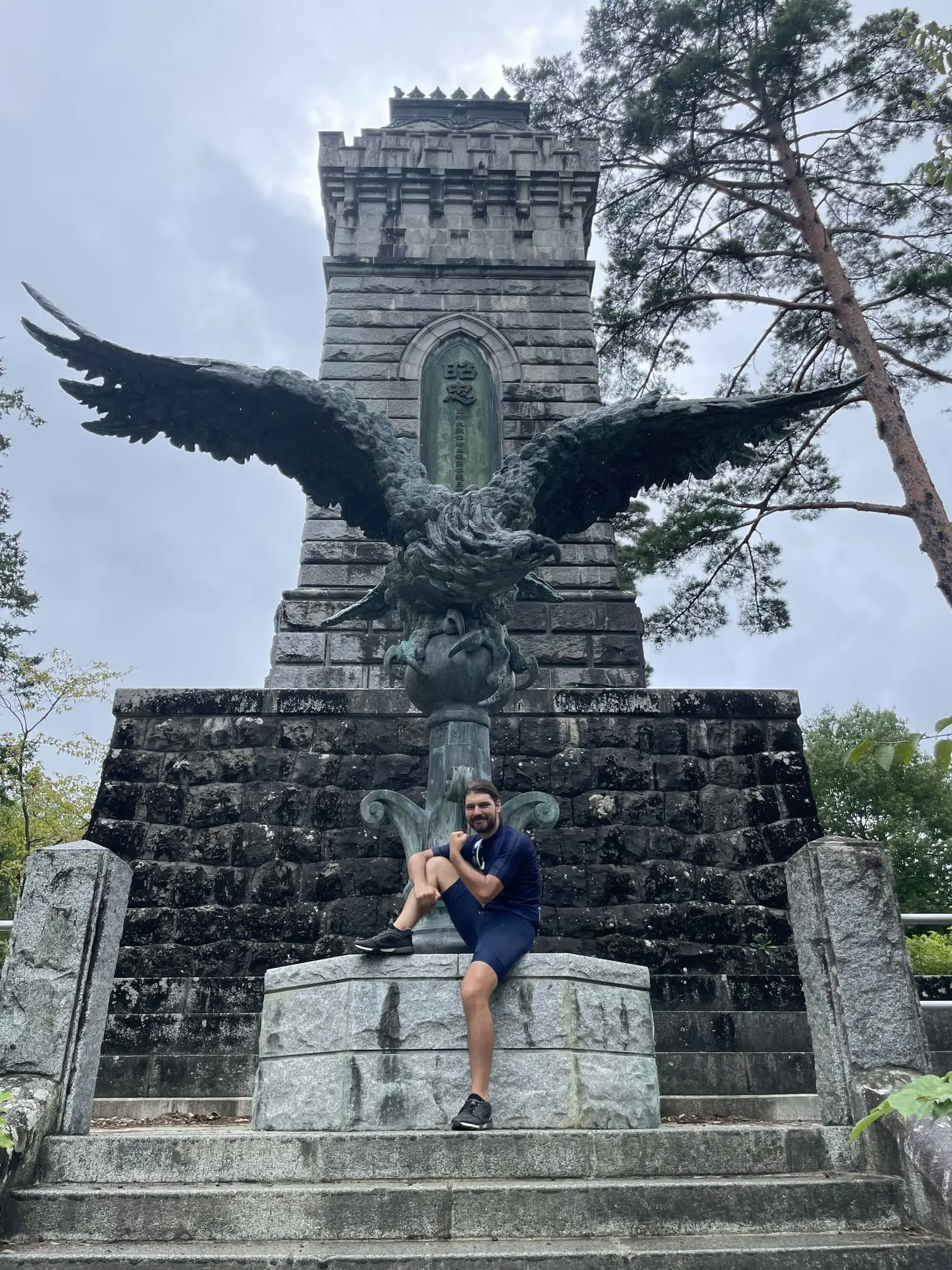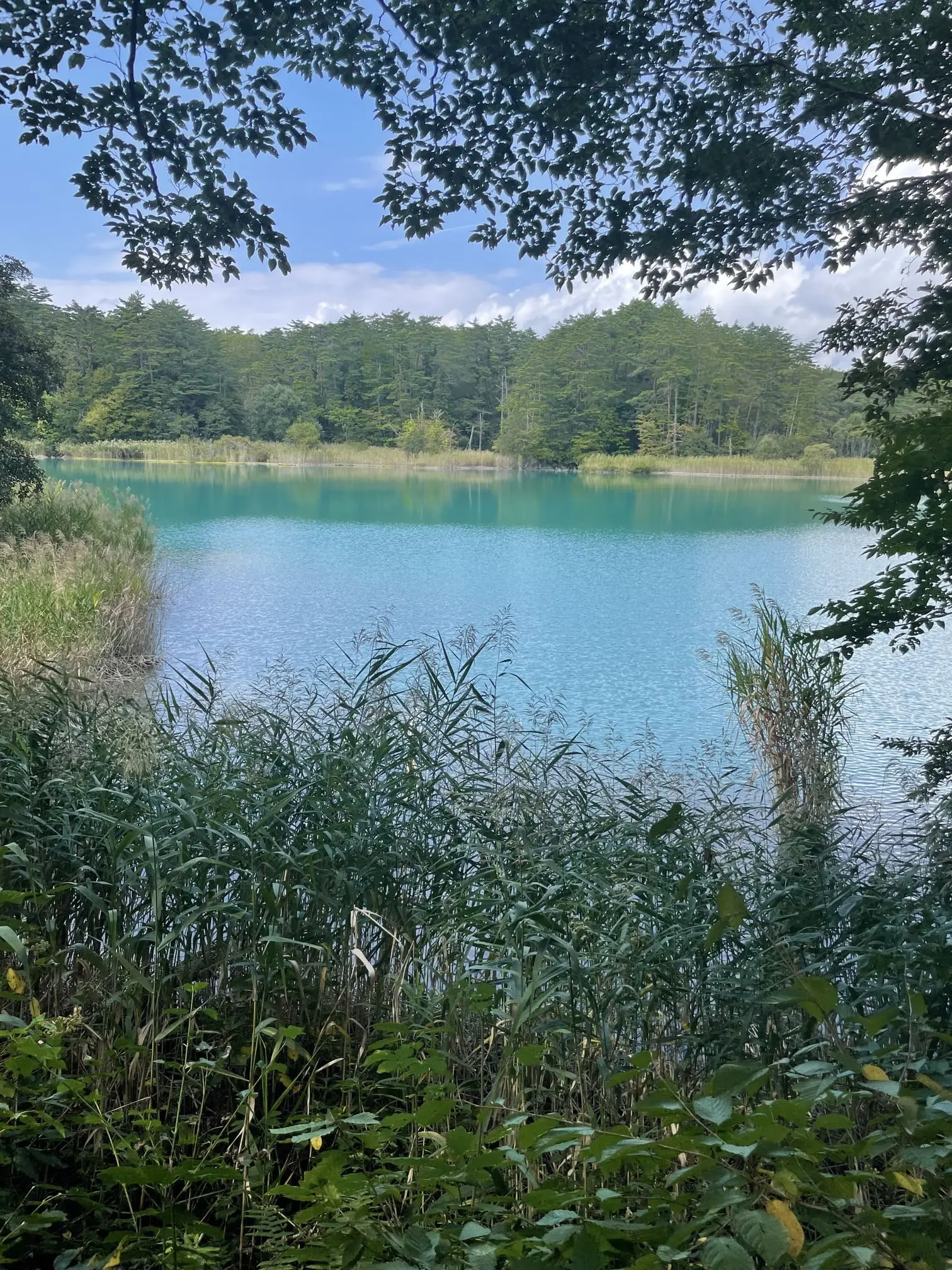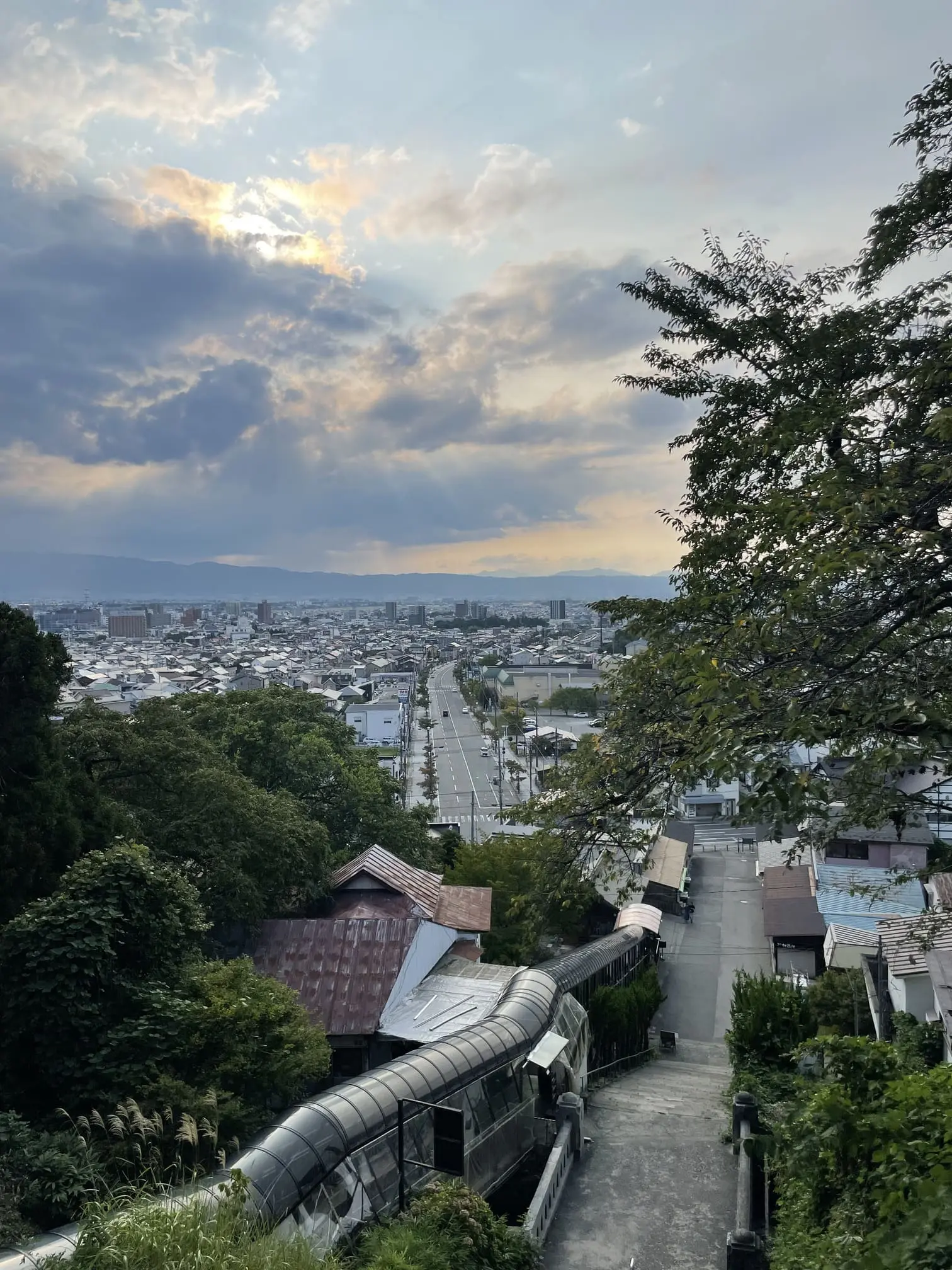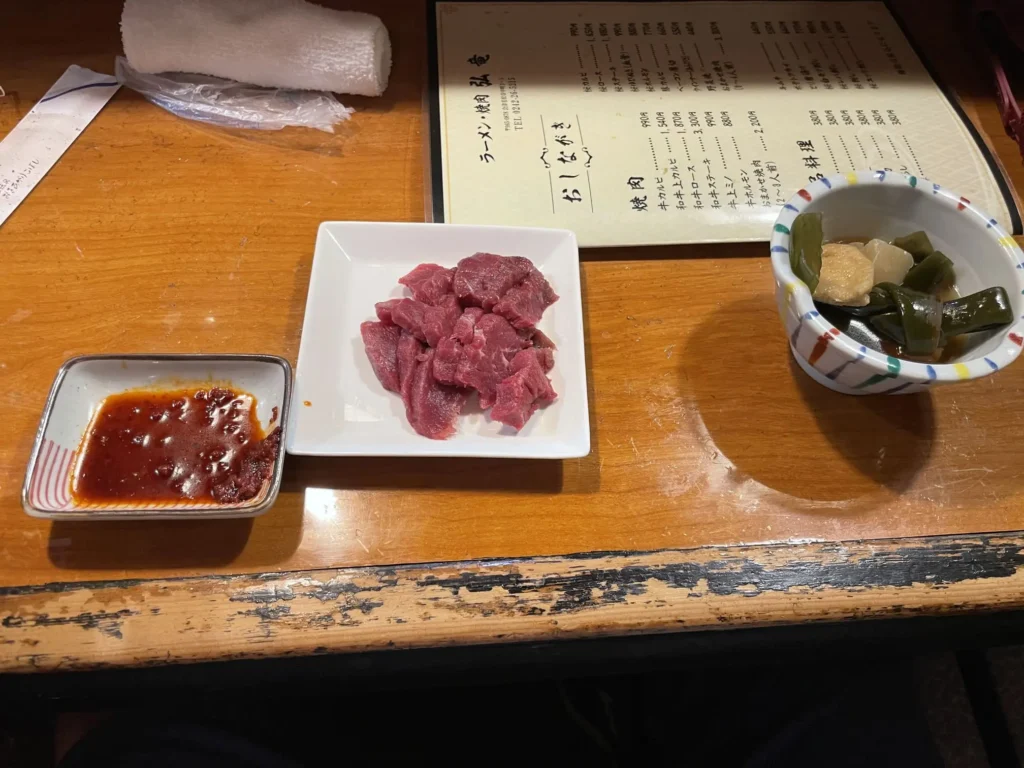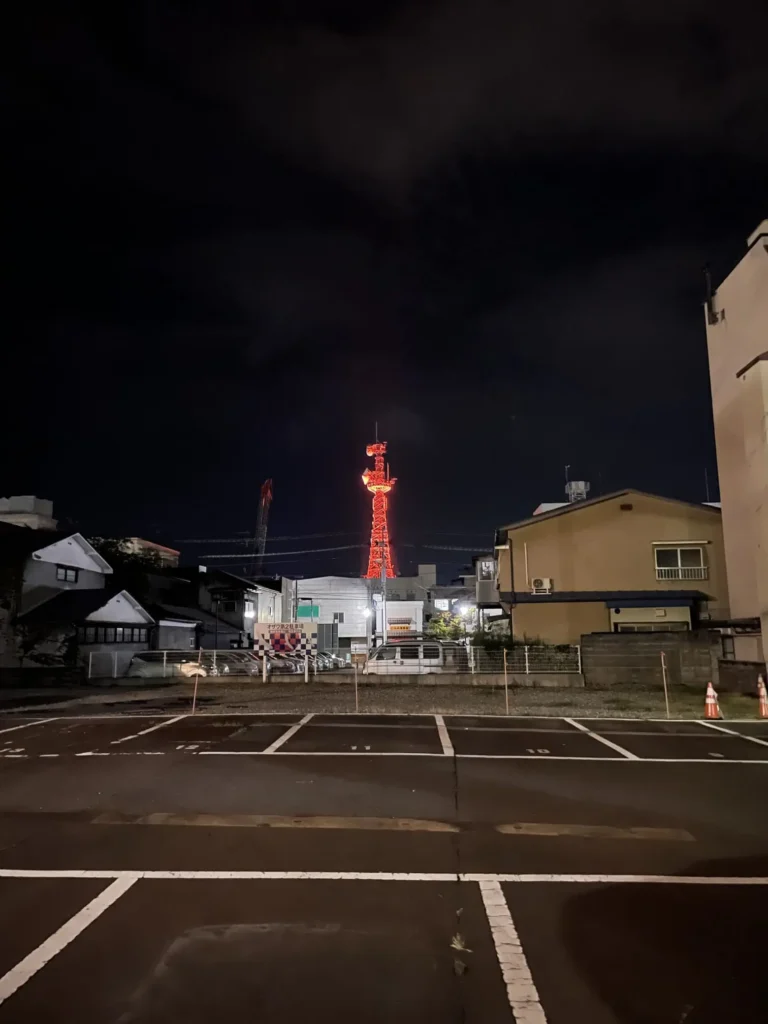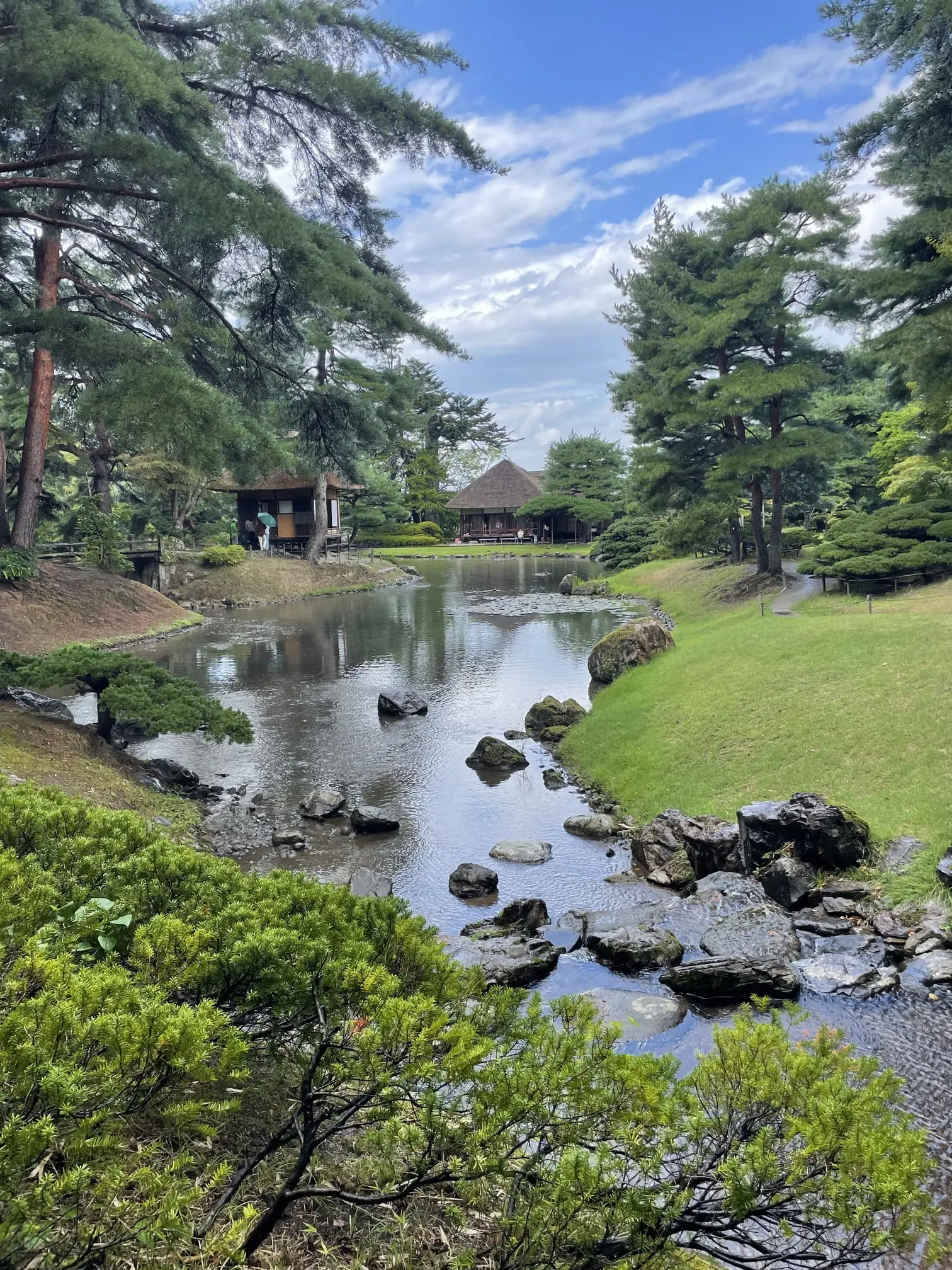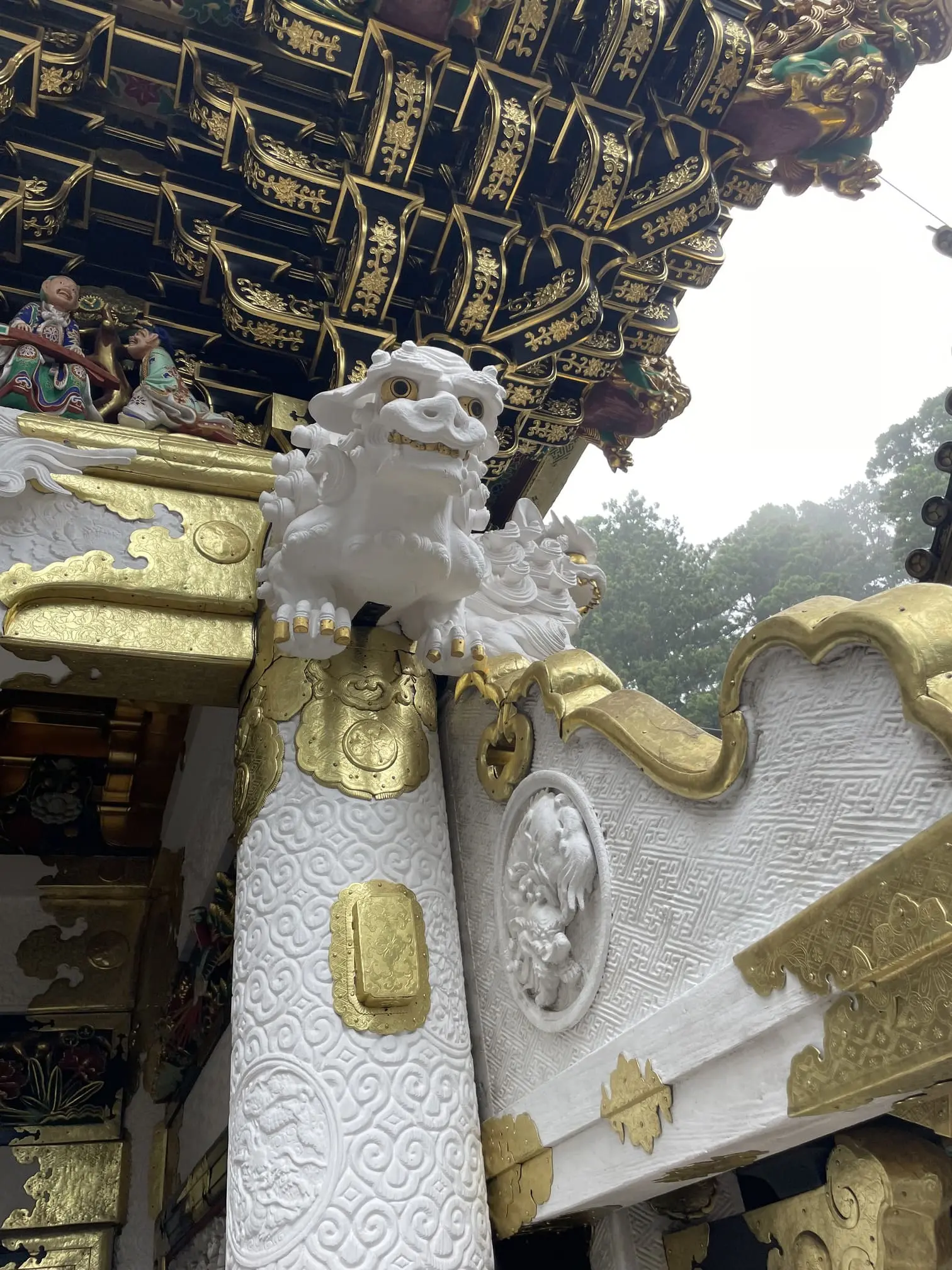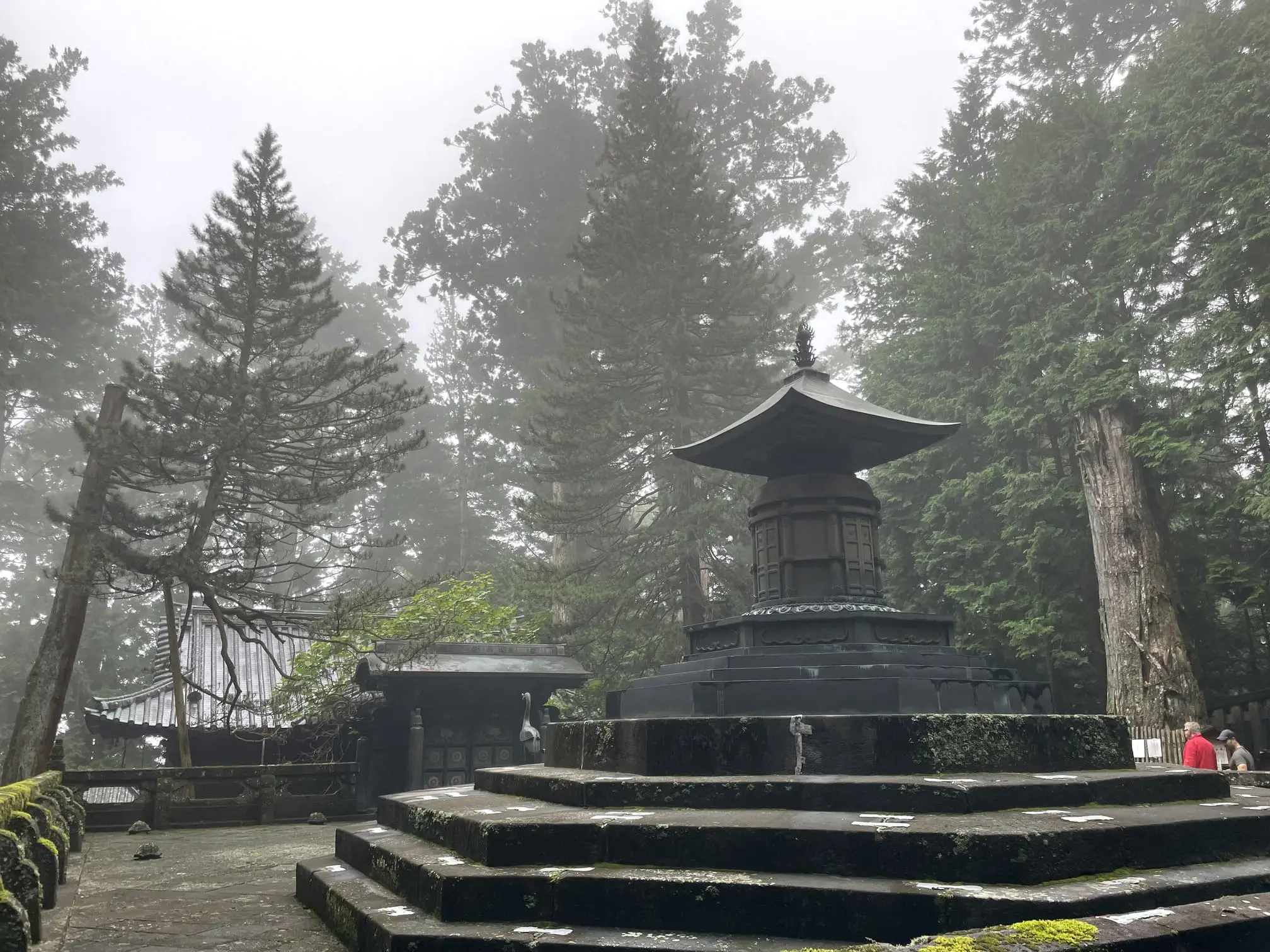After a well-deserved break in Sendai, it’s time to head south to the famous prefecture of Fukushima. It’s a very interesting section of the route, giving you the chance to discover more about a region that is unfortunately all too well known for a modern-day disaster.
Fukushima-Nikko (Tochigi) a more historical Japan.
I’ll let you discover that in today’s article:
I depart late to first visit the heights of the Sendai castle (which no longer exists). The view over the city is dope, with a beautiful statue of a falcon and Date (Masamune, explanation cf Day 14). You can also see the pink Buddha, Kannon, in the distance, which I won’t be visiting closer, sadly.
I then head towards Fukushima. First, I want to see the beaches and the coast of one of the prefectures most affected by the 2011 tsunami. You can see that everything was razed, and the trees are struggling to regrow. You witness a wounded side of the country that nonetheless wants to bounce back (many anti-tsunami structures have been built). The wind is blowing like never before, and I realize that swimming in this water would be reckless. The crows next to me can’t even move and are just hovering.
The rest of the day will only consist of going as quickly as possible towards Fukushima under atrocious rain and zero visibility. Safety was not ensured as I arrived once again in the dead of night without lights.
I take my room in a very nice hostel and eat a Thai papaya salad in a nearby food truck. After filling my stomach, I only wish for one thing: sleep.
Day 16 Fukushima to Motomiya (42 km)
Upon waking, I notice that my front panniers are becoming more and more gaping. I need to find a solution: for now, it will be hand-sewing by buying thread and needles in the two-euro shops in the city. It takes me a good morning to do this and tape over it. The result seems solid. My other option would have been to have a package delivered to a convenience store for new panniers, but my thrifty side tells me that the sewing will suffice.
For breakfast, I enjoy a superb Omurice (omelet on seasoned rice) and head South to discover more of this prefecture, which is too often associated with the 2011 incident.
Information point: Fukushima is both a city AND a prefecture. Like most prefectures in the country, they take the name of their capital. That’s why the Fukushima incident is linked to the prefecture, but the city is far from the coast and wasn’t really affected by the tsunami or the nuclear accident. However, following the coast, there are more dangerous areas that I won’t be aiming for on this trip, of course. Let’s stay well inland to enjoy the positive elevation
The city is so-so, but I think there are a few places to explore to enjoy shops, restaurants, and other activities.
I arrive late in Motomiya, skirting around one of the key but very steep places in the region, the Sky Line road between the mountains; maybe next time.
I pitch the tent near a field below that seems well away from the houses.
Day 17 Motomiya to Goshiki Numa (46 km)
Bad calculation for the night: I have no more water and wake up several times parched, making use of the last drops in my bottle. My throat is dry at 3:00, so I decide to quickly go into the village leaving my tent to find those famous vending machines present in any Japanese hamlet. I’m not a fan of this idea of overconsumption of single-use plastic, but this time, it saved my night and my very urgent thirst. Phew 😀
At the start of my day, I wish to visit the Goshiki Numa ponds and see Mount Bandai (if you know Street Fighter, you know the brand). I leave in a hurry, seeing a car pull up near my spot. They’re all going to chase me, those early morning Japanese 😀
I would then aim for Aizuwakamatsu, but my day will not go as planned. I ride over a piece of glass, and my rear tire is flat. I change the inner tube and the tire to lose only about 20 minutes at first. But mental fatigue sets in, and I find that the tire is not inflated enough. So I try to inflate it more, and as a result of not securing the bike enough, it falls over with my pump in my hand. Result: the valve of the new inner tube breaks, and so does the pump. I can no longer inflate anything and have to change the inner tube again.
I then aim for the nearby village to find help. I come across a police office, and the gentlemen help me find a Presta type pump (“French” version), the first one being for a Schrader type (US one), so I tell them it won’t work. They scour the entire village to finally find me the right equipment. I give them a HUGE thank you and owe them one!
I go to refresh myself with a small comforting meal and then camp near the ponds that I will visit tomorrow due to this loss of more than 2 hours.
Day 18 Goshiki Numa to Aizuwakamatsu (56 km)
I start slowly to do part of Lake Hibara and join the ponds for a little walk. The gradient of blue and green is sublime and soothing (a bit like the Plitvice Lakes in Croatia which I saw, Day 5 Balkans Trip). The small info about the presence of bears is a little less reassuring, though, 🙂 I will make noise during my entire walk.
The ponds were formed by the recent eruption of Mount Bandai in 1868, leaving in its wake devastated villages and sinkholes that created these ponds. It’s quite curious but the colors are so enjoyable that you could be close to say it was a “good” event…
Afterwards, I head back towards Lake Inawashiro to reach the town of Aizuwakamatsu.
The descent from the lake to the town is pure speed pleasure; I love it. I quickly pick up spare parts at a bicycle shop a new Czechoslovak pump (what a coincidence) and inner tube).
I then go to see the Byakkotai hill, where young samurai took their lives when the town of Aizu fell to the emperor in 1869 (Boshin War). One of them survived by “accident” during his seppuku (ritual suicide) and was able to tell their story. The friendly Sazaedo is also worth seeing, shaped like a Sazae (a Japanese mollusk/shellfish), but no need to go inside; paying 5 euros to go up a spiral staircase and down is unnecessary (#IAmAScammed).
In this city, you quickly feel like you’re entering a more historical Japan. The era of the samurai is very present here with several houses to visit. I’ll do one tomorrow.
Finally arrived at the hostel that just opened, the host Gina is very welcoming, and I have the place all to myself hehe. The Aizu plains region, surrounded by mountains and thus with little access to the sea, means that the local specialty won’t be fish… but horse sashimi (raw slices of meat). I try it, and honestly, it’s quite basic, not strong in taste, and the texture is more or less like beef. The cook even offers me some horse Horumon seasoned with soy sauce. I initially don’t know what it is, and in the end, I realize that horumon are offal haha. I might have eaten horse intestines; I don’t know exactly. I didn’t die, so it’s fine. A very drunk man also starts a conversation with me, and even with a translator, the conversation is difficult due to his level of inebriation which is pretty fun.
I then go back to rest; a morning visit awaits me tomorrow.
Day 19 Aizuwakamatsu to Shimogo (37 km)
I start by visiting the rest of the town, first Oyakuen. It is a garden and a tea house rebuilt by the Aizu clan after its destruction. It is inspired by Koreans with many medicinal herbs. The garden survived despite the Boshin War. The colors and summer moss are poetic and a real moment of gentleness despite the abundant rain; I savor the moment.
I then head towards the Aizu Bukeyashiki (Samurai) house, it’s nice but nothing wow compared to what I’ve seen in Kakunodate. You can see the different living rooms of the clan, the rooms for distinguished guests, etc… The sensational anecdote being the wife and children of the clan chief who took their lives during the Boshin War thinking that the husband had died, but in the end, he survived; the story must have been heartbreaking.
Before leaving the city, I still go to see the Aizu castle, which is very beautiful nestled high up with the region’s mascot next to it. Then obligatory tea tasting before leaving.
I still want to eat a bite, but it seems that here the restaurants are not often open at 14:00. I end up finding a rather atypical skewer restaurant; I eat konjac, mochi, herring, etc… and a small glass of milky sake, curious but good.
I then head towards Shimogo late. I wanted to see Ouchi Juku, a folkloric village from an ancient era with thatched-roof houses, but the elevation demotivates me, and I will see a similar village later on the way, so no need.
I then arrive at the Shimogo campsite, and there, a great moment happens : I see a tent and a trekking bike next to it; an Australian named Vincent approaches and questions me. We realize that we come from a similar northern route (he from Hokkaido, me from Aomori) and are heading to the same place for the next few days (he aims for Osaka through the mountains, I want the same route but to continue to Hiroshima afterward). Other common points of the trip emerge: visiting a thermal village in the mountains (Kusatsu), using Komoot for guidance, decisions of visits or non-visits. We have a good laugh and decide that we’ll spend a little time together tomorrow without promising a shared route for long. We’ll see what fate tells us. I like this principle.
It’s now time for us to recharge our batteries with a drive through the valleys between Fukushima and Tochigi, before taking a rest in Nikko in 2 days.
Day 20 Shimogo to Nikko (Tochigi) (85 km)
With Vinc, we head for Nikko. Some climbs are ahead, but we handle them quietly. I see that he has a month of advance cycling in his legs; he takes the steep climbs better, but we still have a fairly similar pace, so it works.
We arrive at Ryuokyo, the dragon waterfall! The gorges and waterfalls are superb; the little walk is nice. Vincent gets an old leech on his foot with his hellish sandals… I didn’t enjoy it, but well, he’s Australian; he’s used to weird and wild creatures this crazy dude 😛
I also discover that he’s vegan; we’ll adapt to the diet. But for him, it’s mostly convenience stores/Konbini and eating plum onigiri (rice cakes) or other dishes without animal products, yes, fantastic 😀
We arrive with difficulty in Nikko with our hostel in the heights, but the atmosphere is great. We meet a German woman, Leona, super nice, wandering for 3 months. We establish the plan for the next day, which will be a nice break to enjoy the most famous temple complex (there are three here), the Toshogu, built by the country’s most dominant family for nearly two centuries, the Tokugawa.
This night, I also ate for the first time in a restaurant being served by a robot; it was funny and disturbing at the same time haha.
It’s been an adventurous first synchronized day, so we’re heading back to the hostel to get some sleep and enjoy a nice break tomorrow.
Day 21 Nikko Pause
Finally! My second day of rest in 3 weeks, it’s worth celebrating WOUHOU.
We set off in a trio to visit Toshogu. We chat a lot during the visit, but we still enjoy the moment. The pagoda at the beginning is said to be balanced by a ball like a pendulum to counter potential shakes in this earthquake-prone country (like the famous tower in Taipei, Taiwan). We see a molding of a sleeping cat that is super cute during the ascent of the complex. We also notice that the trees are a bit different from the north; we see many umbrella pines that are said to be endemic to Japan. We can then admire the most detailed and majestic gate in Japan, white with lots of sublime moldings. Despite the surgical precision of the composition, one pillar is upside down, which is intentional. Several Asian cultures see perfection in the construction of a major project as a bad omen, meaning its destruction is imminent.
That’s why this decision of imperfection was made.
Several great names are said to be buried here. The most important being Tokugawa Ieyasu, the instigator of the shogun’s total power (leading the samurai) over the country and the unification of its clans. This marks a time of peace and closure to foreigners for over 250 years. There is even a building designed to house Ieyasu’s horse, which helped him fight at the Battle of Sekigahara (which marked his victory for the unification of Japan, which I will visit later in my Trip I hope).
With the mist and the heat combined with the humidity, the place takes on a really mystical and somewhat terrifying turn.
We quickly eat and visit a nice bridge in the city before returning early.
These historical visits have really made me want to know more about the characters and events whose stories I know a bit but not enough to understand the complexity of Japanese culture. I look forward to it when I reach more central Japan.
We make the most of the last few moments of our beautiful day of rest before continuing on our way to the beginning of the serious heights of Japan aka the Japanese Alps.
This article marks the end of my journey through Tohoku and into a richer, more central Japan. This week has been full of discoveries, and I’ve also met and acquired a new travelling companion with whom, I hope, we’ll be able to spend a few more days/weeks supporting each other on our adventure.
See you in the next issue for more Japanese experiences.

